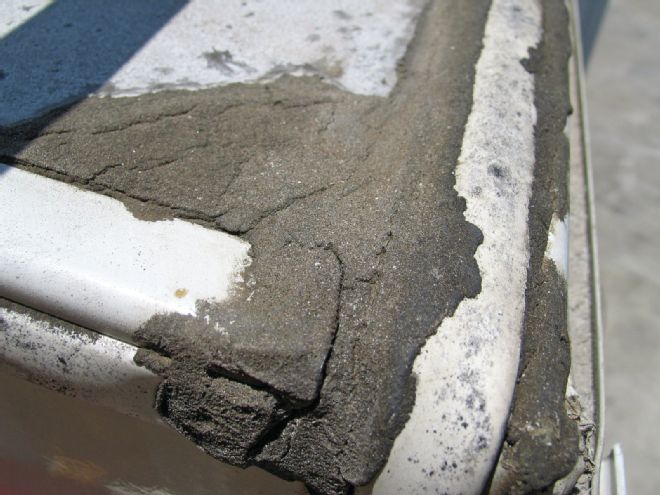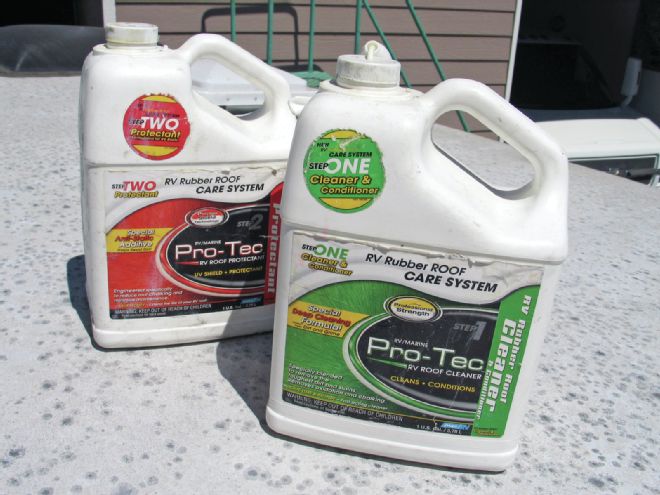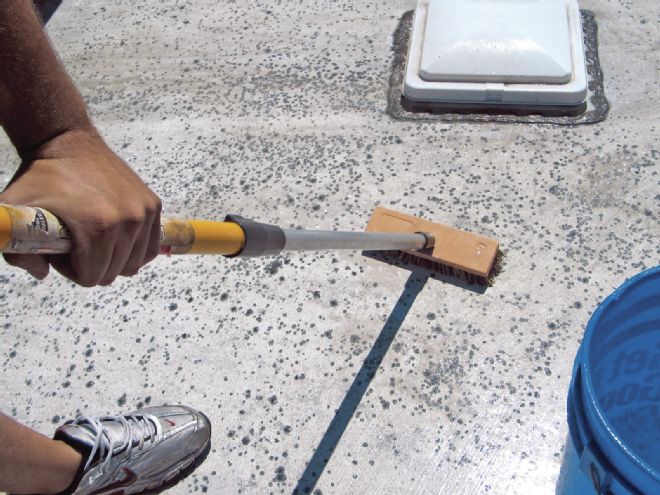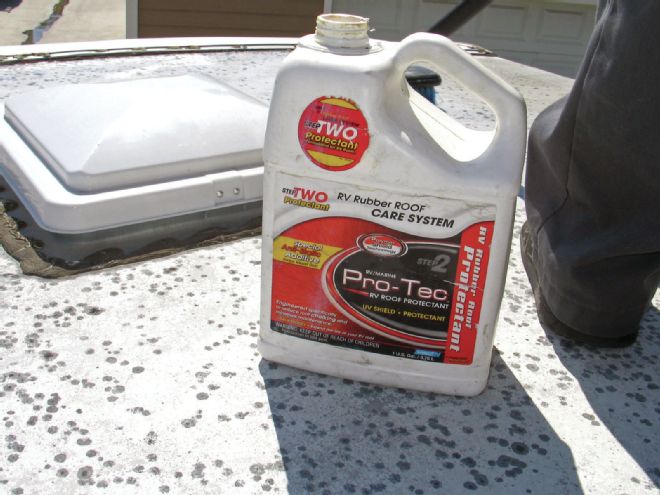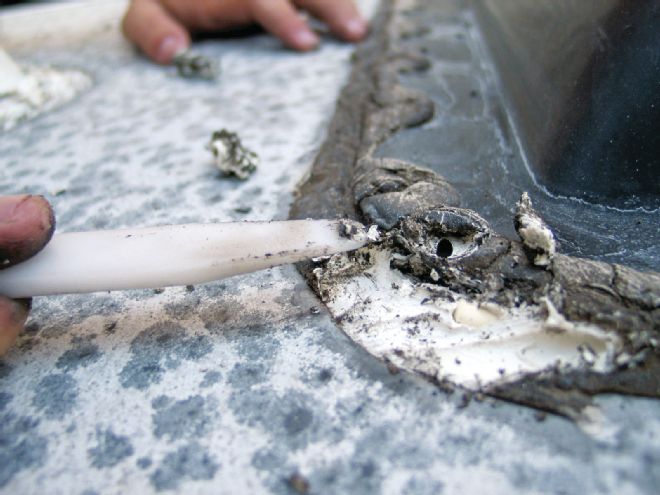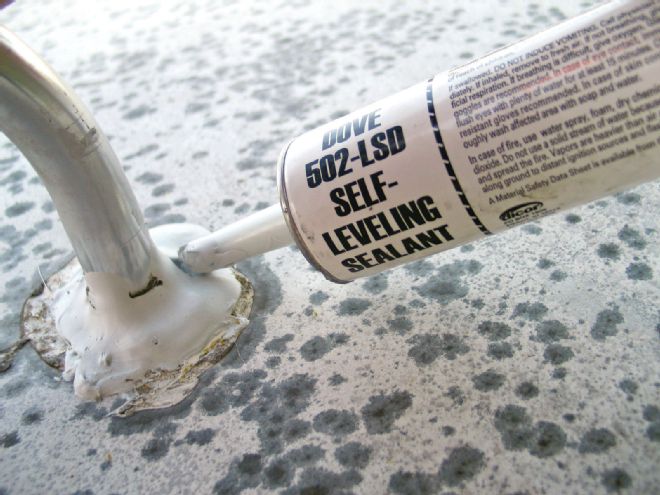There are four factory-installed roofing flavors to choose from in the ice cream shop that is the RV industry: metal, EPDM (ethylene propylene diene monomer) rubber, TPO rubber, and fiberglass. Galvanized steel (used on older coaches), aluminum, and fiberglass are self-explanatory and are perhaps least in need of regular maintenance. However, they are also the most expensive and heaviest and are rarely used on light-model RVs.

| Taking Care Of The Top Side Rv Roof Maintenance Pressure Washing Rv Roof
EPDM is a rubber coating mated to a woven fabric base that’s been in use as a roofing material for decades. It has an orange peel texture and is usually coated bright white. In reality, EPDM is a dark color, but white pigments (such as titanium dioxide, zinc, or calcium carbonate) are added to the surface to give the rubber material its white color. Not only looking nice, the white gives it a reflective nature to cut down on heat retention. TPO (thermoplastic olefin) is comparable to EPDM and uses a similar waterproof backing material, but the coating is smooth and shiny. When new, people often mistake it for fiberglass. It has a nonporous finish that doesn’t accumulate dirt in the pores, and it doesn’t chalk like EPDM.
Even though EPDM is very durable, there are a few drawbacks that mean you must give it some additional care. The EPDM membrane is thin, about 1/16 of an inch, which makes it lightweight but easily damaged. You should always avoid low-hanging branches and be careful about dragging anything across the roof surface that could cut or tear it. EPDM is porous, which means it can get very dirty very quickly, especially in damp climates, and it is subject to chalking as it weathers and ages. After about 12 months, the white pigments added to the rubber begin to react to moisture, heat, and sunlight, causing them to rise to the surface. They appear as white or gray powdery residue that easily washes away (only to form white and black streaks down the side of your RV).

| Though it looks more like a lunar surface than an RV roof surface, these mold stains (which won’t go away at this advanced stage) will at least be kept at bay if the roof is cleaned properly. Continual cleaning will keep new mold spores from attaching to the roof.
Over time, an EPDM roof might soon become stained with mold if left exposed to the elements (sun, rain, morning dew) and not frequently cared for. Because of the nature of white materials to reflect sunlight, the rubber roof does its job a little too well, reflecting away most of the heat needed to kill mold spores (the roof needs to be at least 126 degrees to do this). It is recommended that you wash your roof at least four times a year using a nonabrasive cleaner and a medium-soft brush. Do not use any kind of petroleum-based product on a rubber roof—ever!
Though stains that the mold create are usually permanent, they can generally be removed if you catch them soon enough. However, the mold is not attacking the rubber roof at all; it is merely living there and will not eat holes in the roof material (90 percent of leaks happen at the seams, anyway). Yes, it looks ugly, but there is much life left in the roof, and that life can be prolonged with a little bit of cleaning and conditioning.
